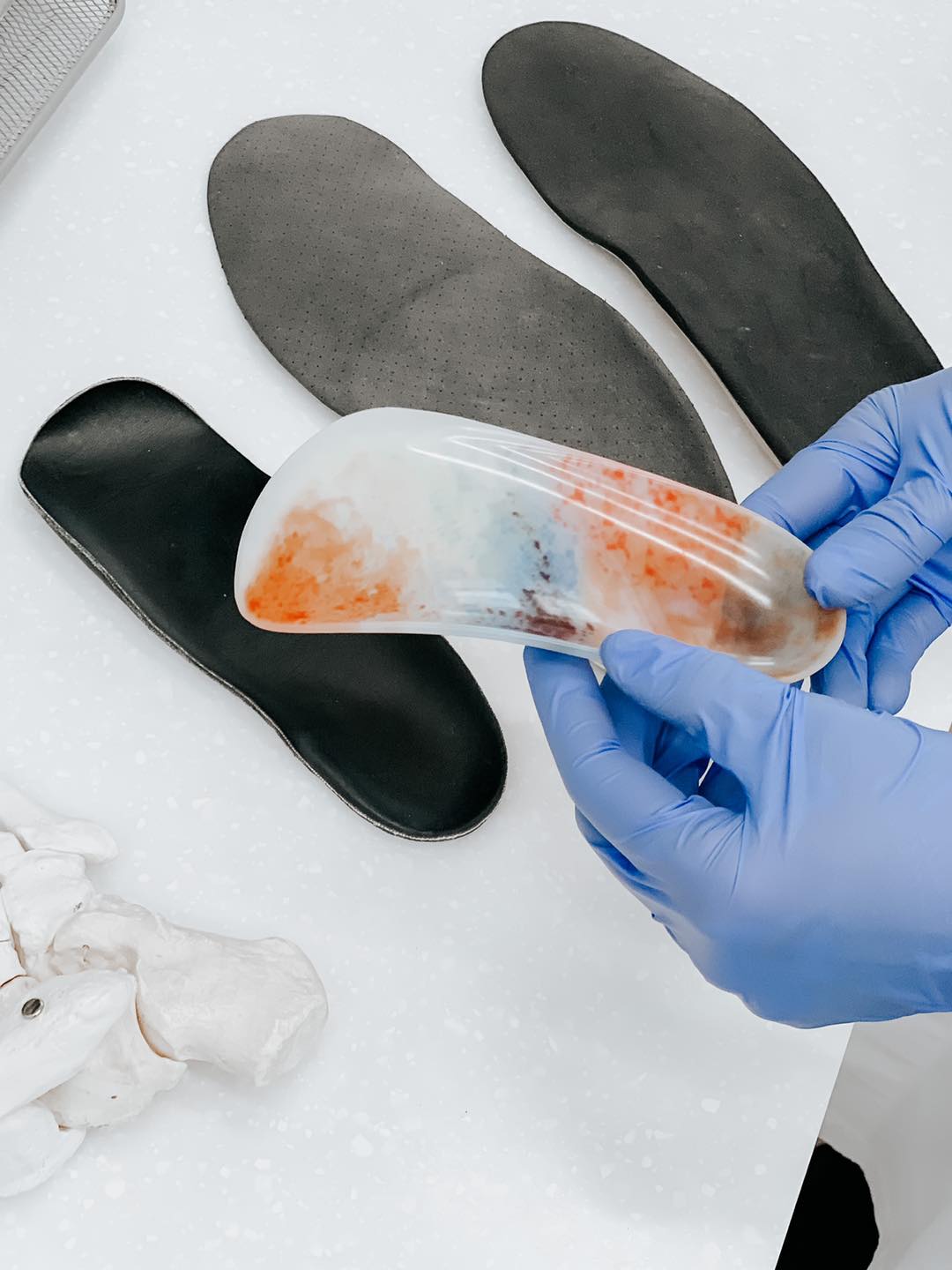Plantar orthotics can both prevent and treat a wide range of foot-related conditions (feet, knees, hips, back).
It is a medical treatment, covered by most private insurances, which must be prescribed beforehand. Additionally, only a doctor or podiatrist has the authority to issue a prescription for plantar orthotics.
Before prescribing the orthotics, a biomechanical examination is necessary to analyze your foot type, posture, and gait. They are then custom-molded using a 3D scan, providing unmatched performance and comfort. Various types of orthotics are available, ranging from slim and discreet to full-length orthotics.
Foot orthotics are a treatment that can provide relief for certain foot conditions. They can also be prescribed as a preventive measure for certain conditions.
Orthotics are used to improve foot biomechanics after a thorough evaluation of your condition and a precise diagnosis.
Before prescribing orthotics, a podiatrist performs a biomechanical examination to determine your foot type, posture, and gait. If necessary, X-rays may also be taken to complete the examination. The podiatrist also takes your complete medical history into account to determine if your problem is related to your feet and not to another health issue that may require consultation with your doctor.
DIFFERENT TYPES AND COMPONENTS OF ORTHOTICS
There are different types of orthotics, including:
Functional orthotics, which correct foot biomechanics.
Comfort orthotics, whose primary function is to provide cushioning and mild support to the feet.
In the majority of cases, it is not necessary to get custom-made shoes to wear foot orthotics.
ORTHOTICS FOR CHILDREN
If your child frequently falls, always wears out their shoes in the same area, gets tired quickly when walking, experiences foot, leg, or knee pain, or tends to walk on their tiptoes, a postural and biomechanical evaluation by a podiatrist is necessary.
By having your child see a podiatrist from a young age, you can prevent future foot problems for them.
WHAT PROBLEMS CAN ORTHOTICS TREAT?
Wearing orthotics can help to:
- Correct flat feet and high arches;
- Reduce the progression of certain deformities, including bunions;
- Reduce pain caused by certain conditions (plantar fasciitis, tendonitis, knee or back pain, etc.), when these are secondary to faulty foot mechanics;
- Alleviate symptoms associated with foot arthritis;
- Prevent complications related to diabetic foot.
RECOMMENDATIONS FOR WEARING ORTHOTICS
Before getting orthotics, make sure to have your biomechanics, posture, gait, and foot impressions examined.
Although it is normal to feel some discomfort at first, pay attention to the positive and negative signs of adaptation.
Modifications to the orthotics may be necessary to improve your comfort and posture.
If you are wearing orthotics for the first time, wear them gradually.
Wear shoes that are suitable for orthotics.
Although it is normal to feel some discomfort at first, pay attention to the positive and negative signs of adaptation.
- if you are wearing orthotics for the first time, put them on gradually;
- modifications may be necessary to improve your comfort and optimize treatment for your posture;
- wear shoes suitable for orthotics. Certain shoes, such as mules or sandals, can reduce the therapeutic effects of orthotics.
— Ordre des podiatres du Québec

